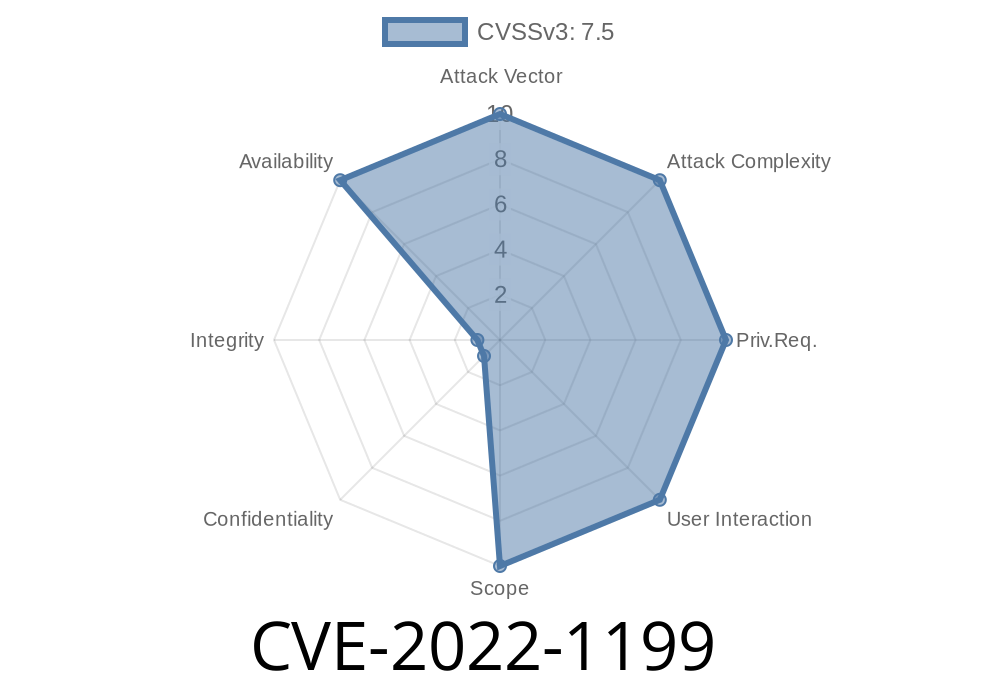A recent flaw, designated as CVE-2022-1199, has been discovered in the Linux kernel, which is at the heart of numerous operating systems. This vulnerability allows a malicious attacker to crash the Linux kernel by simulating amateur radio operations from the user space. Consequently, this can lead to a null-ptr-deref vulnerability and a resultant use-after-free situation, both of which significantly compromise the security and stability of the systems in question.
To help our readers better understand this issue and how to mitigate it, this blog post delves into the technical details of the vulnerability, the code snippet responsible for the issue, and potential exploits that attackers might leverage. Finally, we examine the original references that offer solutions and further insights into the problem.
Technical Details: CVE-2022-1199 Flaw
The Linux kernel hosts a robust set of APIs and functions that provide users and developers tremendous flexibility in operating their systems. One component of this vast ecosystem is the support for amateur radio communications, or "ham radio." In this context, an attacker who acquires access to user space can simulate a ham radio operation, which in turn can reach a flawed component of the Linux kernel.
Specifically, the vulnerability stems from a null-ptr-deref issue, which occurs when a null pointer is dereferenced, leading to an invalid memory access and, potentially, a kernel crash. Additionally, this can escalate into a use-after-free vulnerability, which happens when a piece of memory is still in use after it has been freed up, allowing an attacker to overwrite critical data and manipulate the system's behavior.
Code Snippet: Vulnerable Section
Below is a code snippet containing the vulnerable Linux kernel function that allows the attack to happen:
int amateur_radio_ioctl(struct file *filp, unsigned int cmd, unsigned long arg)
{
switch (cmd) {
case IOCTL_ABORT_BROADCAST:
do_abort_broadcast(); // Null-ptr-deref vulnerability as well as Use-after-free vulnerability
break;
// more cases...
default:
return -EINVAL;
}
}
The function amateur_radio_ioctl() is where the null-ptr-deref vulnerability occurs, as the call to do_abort_broadcast() attempts to dereference a null pointer, which can lead to a system crash and potentially provide an avenue for further exploitation.
Exploit Details: Attacker's Strategy
To exploit this vulnerability and crash the Linux kernel, an attacker would need to gain access to a user space with sufficient rights to simulate amateur radio operations. They would then craft a malicious IOCTL call using the IOCTL_ABORT_BROADCAST command, causing the Linux kernel to execute the do_abort_broadcast() function, leading to the aforementioned issues.
Original References and Solutions
The vulnerability was first reported by Linux Developer Mailing List and has since been assigned CVE-2022-1199. Further information regarding the vulnerability, as well as existing patches and updates that address the issue, can be found on the Linux Kernel Git Repository.
The recommended course of action for affected users is to update their Linux kernel to the latest version, which contains the necessary patches and mitigations to defend against attacks exploiting the CVE-2022-1199 vulnerability.
Conclusion
The CVE-2022-1199 flaw in the Linux kernel exposes a significant vulnerability that could be used by an attacker to crash the Linux kernel and potentially further compromise the system. By understanding the technical details and exploit strategies, users can better protect their systems from such threats. Ensuring that your Linux kernel is up-to-date with the latest security patches is a crucial step in preserving the integrity and security of your system.
Timeline
Published on: 08/29/2022 15:15:00 UTC
Last modified on: 02/02/2023 17:12:00 UTC
